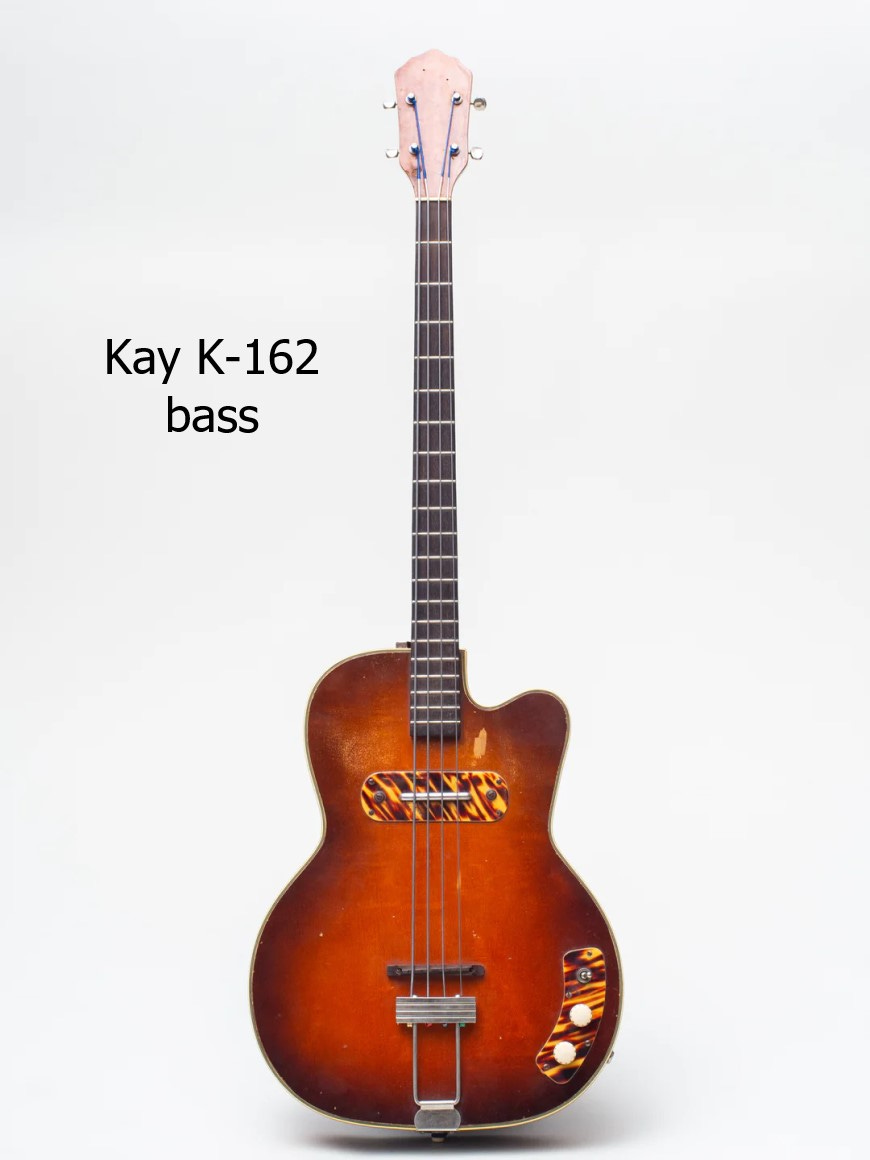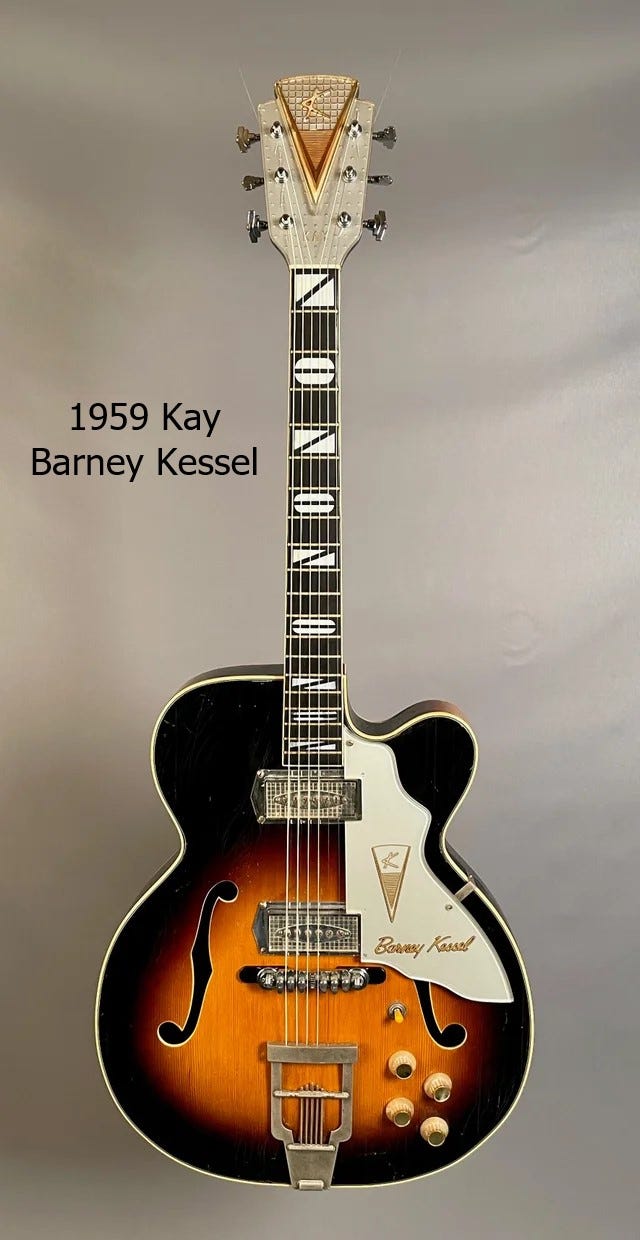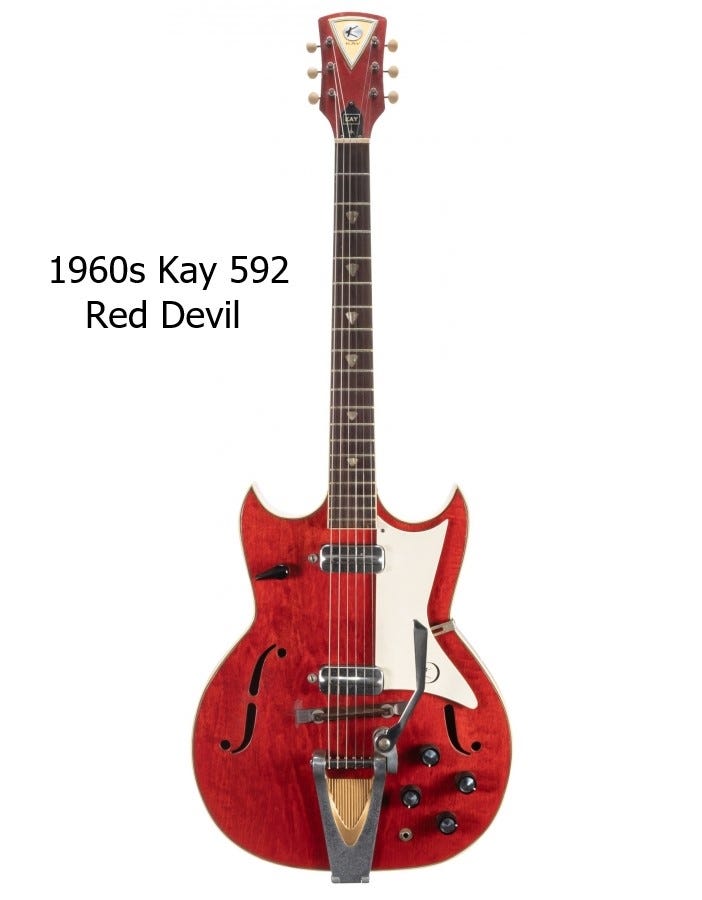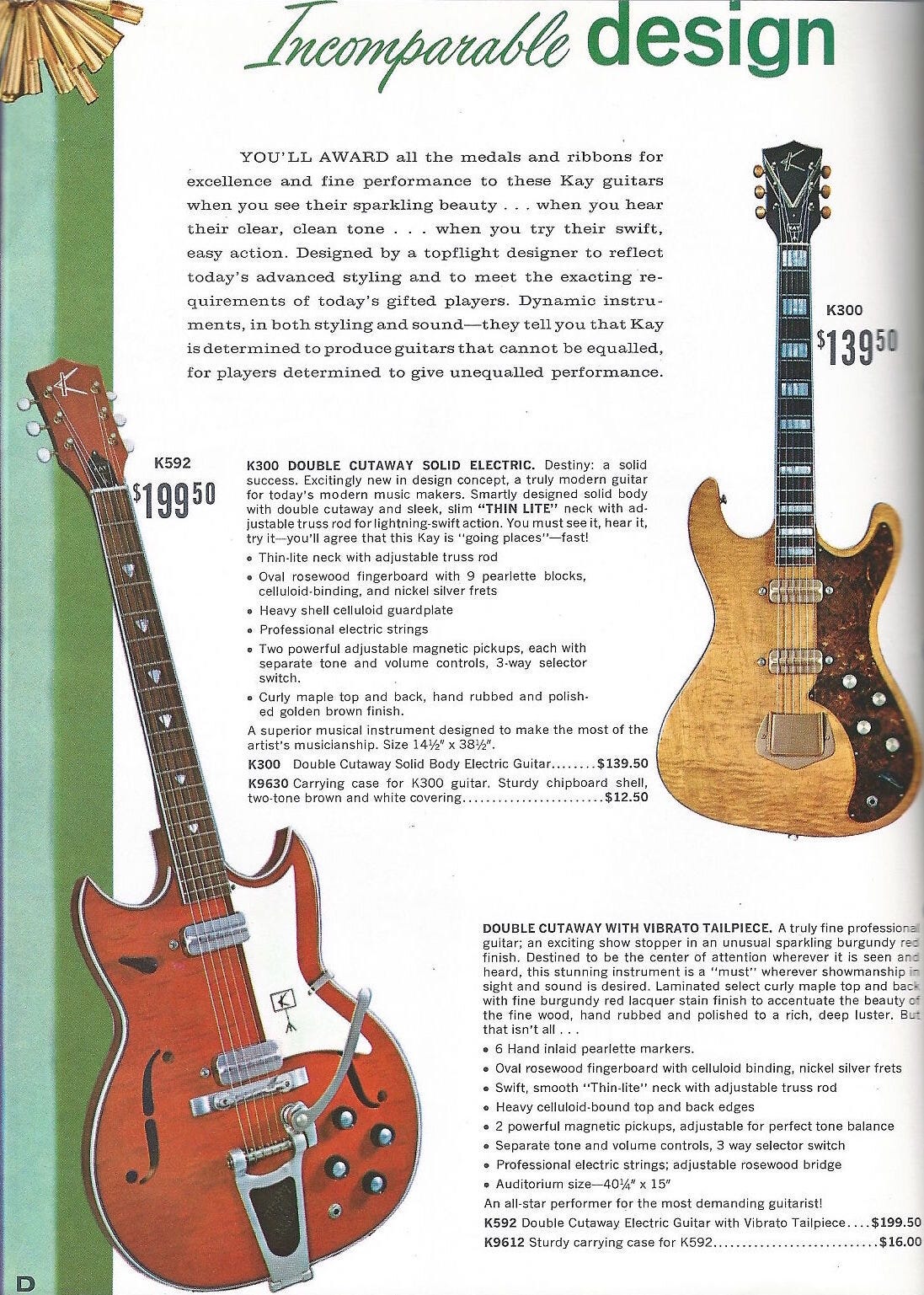Guitar Gavel Lick Of The Week with Adam Gray- “Malted Milk”
Robert Johnson's "Malted Milk", (re)popularized by Eric Clapton and Adam provides a nice little framework on how to proceed. You will have to earn it, not every note is spelled out. An old sensei trick :-).
One of the giant string instrument manufacturer’s from the post-depression 1930s through the guitar boom of the 1960s was Kay Musical Instrument Company.
Mostly known for student grade guitars the Kay Company, like many others, produced guitars for large retail and mail-order brands such as Truetone, Montgomery Ward, Sears, and Penncrest.
One of Kay’s “claims to fame” is the K-162 electric bass in 1952. It was the second production scale electric bass behind Fender and the first thinline bass. In fact the K-162 has a center block making it a semi-solid construction and that was several years before Gibson’s ES-335.
In the late 1950s Kay made an attempt at higher-end guitar players and recruited Barney Kessel for a few signature models, although it’s reported Kessel never really liked them. It’s also worth nothing, Kessel never fell in love with his signature Gibson models either. Debuting in the 1957, the Kessel guitars were the Gold K, Jazz Special (pictured below) and the Pro. The pricing between the models ranged from $265-$400, similar to the range of a Les Paul or Les Paul Custom.
Also in tandem with Gibson, Kay began producing a well-rounded catalog of thinline guitars in the late 50s and by the early 60s they were hitting stride with the introduction of the K-592.
Or more affectionately known as the Kay Red Devil. Made from 1962-1965 it was at the higher end of Kay’s offerings (approx $200), but not as expensive as the Kessel guitars.
Features included a laminated curly maple top and back, maple neck, “Speed Bump” pickups, and a Bigsby B6 tremolo (or Bigsby designed). And of course the burgundy red lacquer finish, the only color available. I love double florentine cuts and that was the main attraction to this guitar when I first saw it. However, if you look deeper there are so many smaller features that make this thing sing; the fret inlays, the triangle gold art deco insert on the tailpiece, and white pickguard tied into the white headstock ornament. My vocabulary doesn’t do it justice so here’s a link to some high resolution images. These were also badged for Western Auto as Truetone and Silvertone for Sears.
Neck’s were bolt-on and some were made from poplar. These are often noted as being part of the “Speed Demon” series from Kay, but after examining Kay’s catalogs through 1964 that nomenclature is reserved for the K-571 and 573 models. Once something sticks on the internet it’s hard to shake loose.





